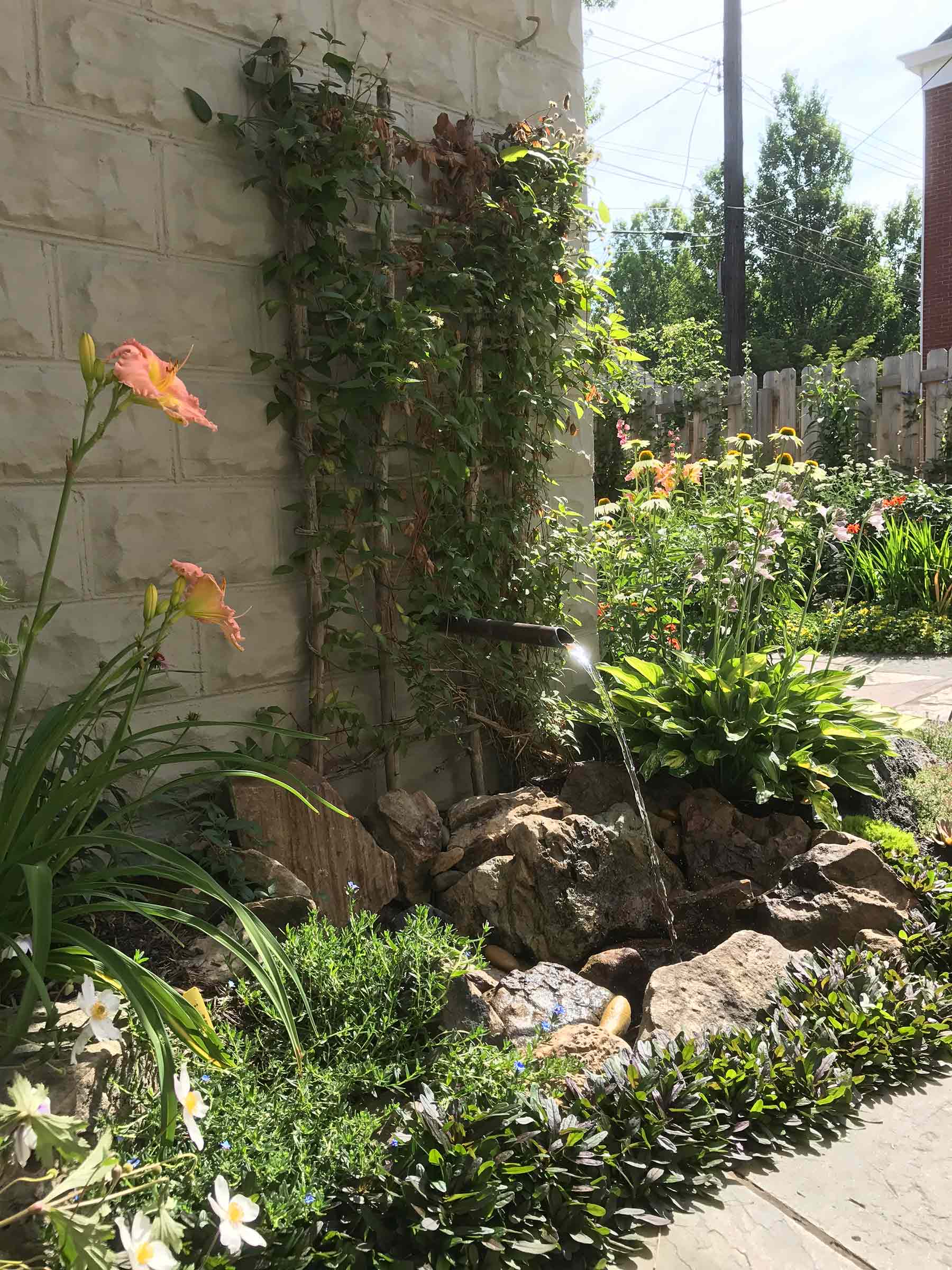Blog

Small Gardens, Big Impact: Treasured Garden Sanctuary
In these colder months, we are highlighting gardens of Western Pennsylvania that inspire us with their beauty and their positive impact on the environment.
Pam Dickinson of Aspinwall makes the most of her small space with vertical gardening, planting containers and selecting plants that will grow well in her backyard. The effect is a garden sanctuary where one is surrounded by plants and feels comforted and protected. Pam is the winner of a Phipps Sustainable Garden Award for 2021 in the category of Garden Retreat, Small Garden.

Both plants and garden features from special people in her life help Pamcreate her garden retreat. Plants from her father and a colleague commemorate their passing and bring solace. Pam describes the other nostalgic features of her garden, “There is a clown sculpture handed down in my family, a natural stone birdbath that my sister gave me 30 years ago, wind chimes from my work with cochlear implants, a birdhouse painted by my daughter, a copper hummingbird from a dear neighbor.”
Pam's garden has many ecological features. She chooses the best plants for her yard and will move less successful plants to areas where they are better suited. She observes her plants daily checking that they are healthy and pest free. Since her garden is so small, she can do all of the maintenance herself. She uses hand tools and doesn’t need to rely on electric or gas tools.

With a limit of growing space, Pam utilizes the vertical areas of her yard to support many plants. She loves clematis and has 10 clematis plants, two of which grow on the ground, while the others climb on a trellis, the fence, or a shrub. Other vining plants she uses are trumpet honeysuckle, variegated hardy kiwi and two Japanese hydrangea vines (one of her favorite plants!) She also has a Hinoki cypress to add more height. In addition to the climbing and vertical plants Pam has native plants that attract wildlife. These include sweet bay magnolia, lobelia, swamp weed, butterfly weed, purple cone flower, columbine, and yarrow. Pam also uses drought tolerant varieties in areas along the garage covered by the overhanging roof and in container gardens.
Pam never uses pesticides. Instead she encourages insects in the garden to help with pest control, releasing ladybugs when needed and watching praying mantis eggs hatch with her grandchildren. Many other insects visit Pam’s yard, including bees, butterflies, spiders and lacewings. Hummingbirds, robins, mourning doves and other birds visit the water feature and bird bath and make nests in the plants and on the fence. The tiny pond gives home to two fish, snails and a frog! Pam says, “There is always something blooming, and the bees and butterflies are everywhere.”
Pam considers herself very lucky to have soil from glacial deposits along the Allegheny River. The soil in her garden in Aspinwall is very rich compared to the clay laden soil of her previous yard in Mt. Lebanon. In fact, when she moved 6 years ago, she brought many plants with her and says that all of these transplants grew at least 30% more than they ever had before. She makes her own compost with food scraps, leaves and clippings and adds this amendment to the soil. She also adds manure, worm castings, or organic fertilizers when necessary. Pam’s plants are so healthy that she divides many every year and shares them with friends and family.

Natural rocks enhance the flowers, create cozy spaces, and add contrast and texture to the garden. Pam has rocks from Pennsylvania, many of which have fossils. The rocks provide places to sit, eat and enjoy the garden. One of the rocks is so large that 3 – 4 people can sit on it. She enjoys the garden while drinking coffee or dining on this rock. Shaded by the sweet bay magnolia, this is Pam’s favorite spot in the garden.
Pam says that her garden is “a place to grow on many levels, a place to appreciate nature, and a place to find peace.” It is her sanctuary where she finds comfort and joy.
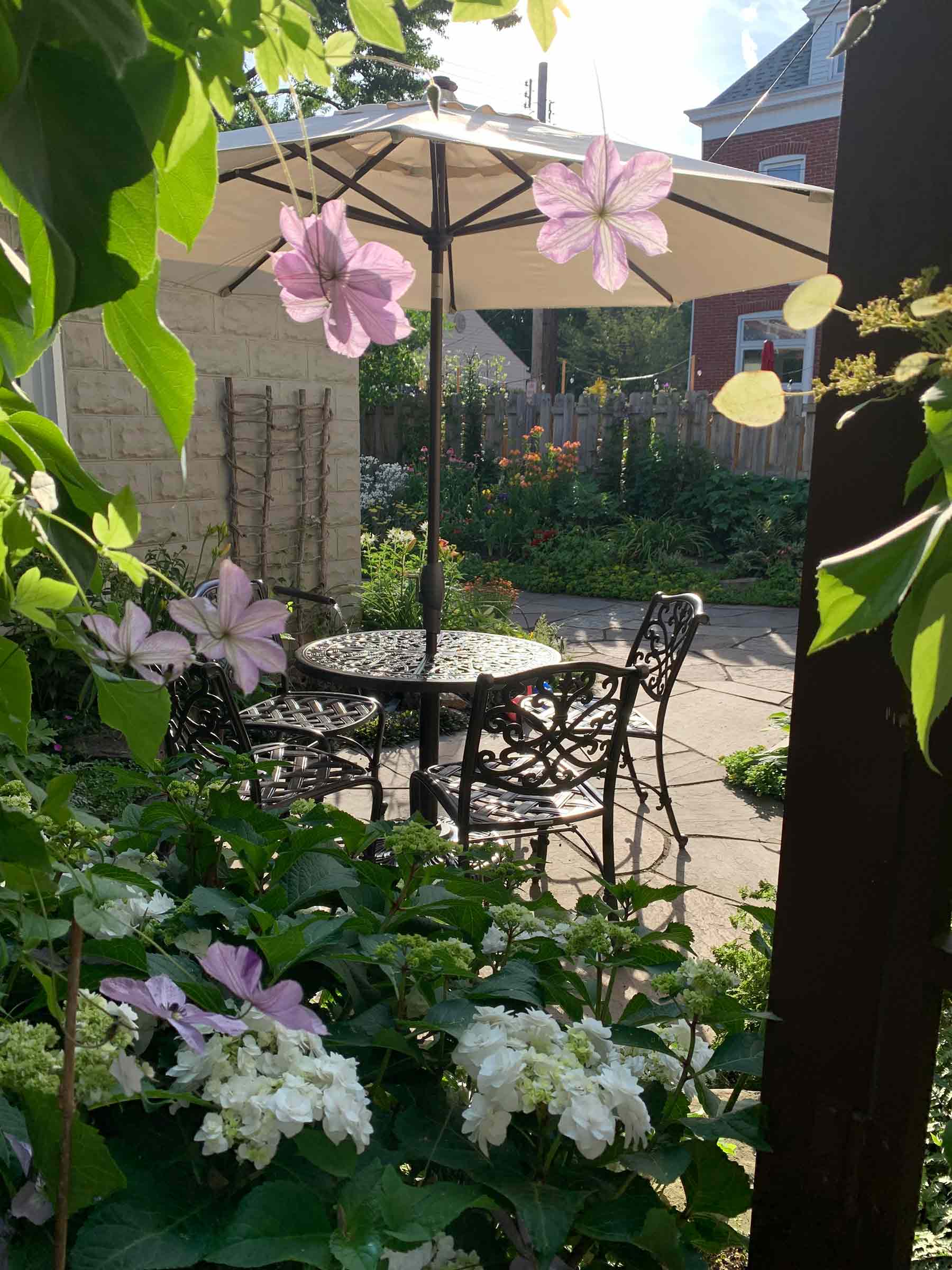
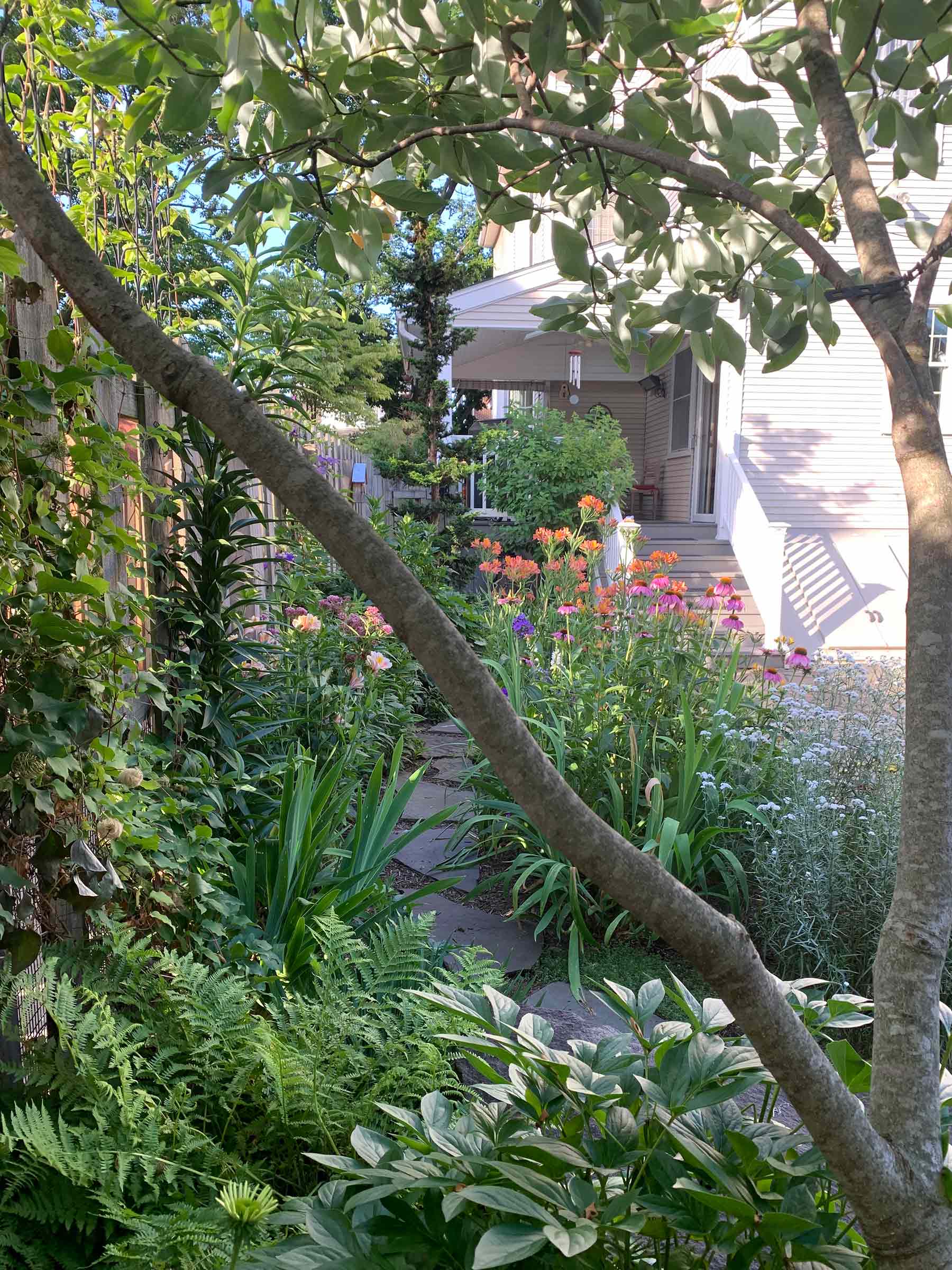
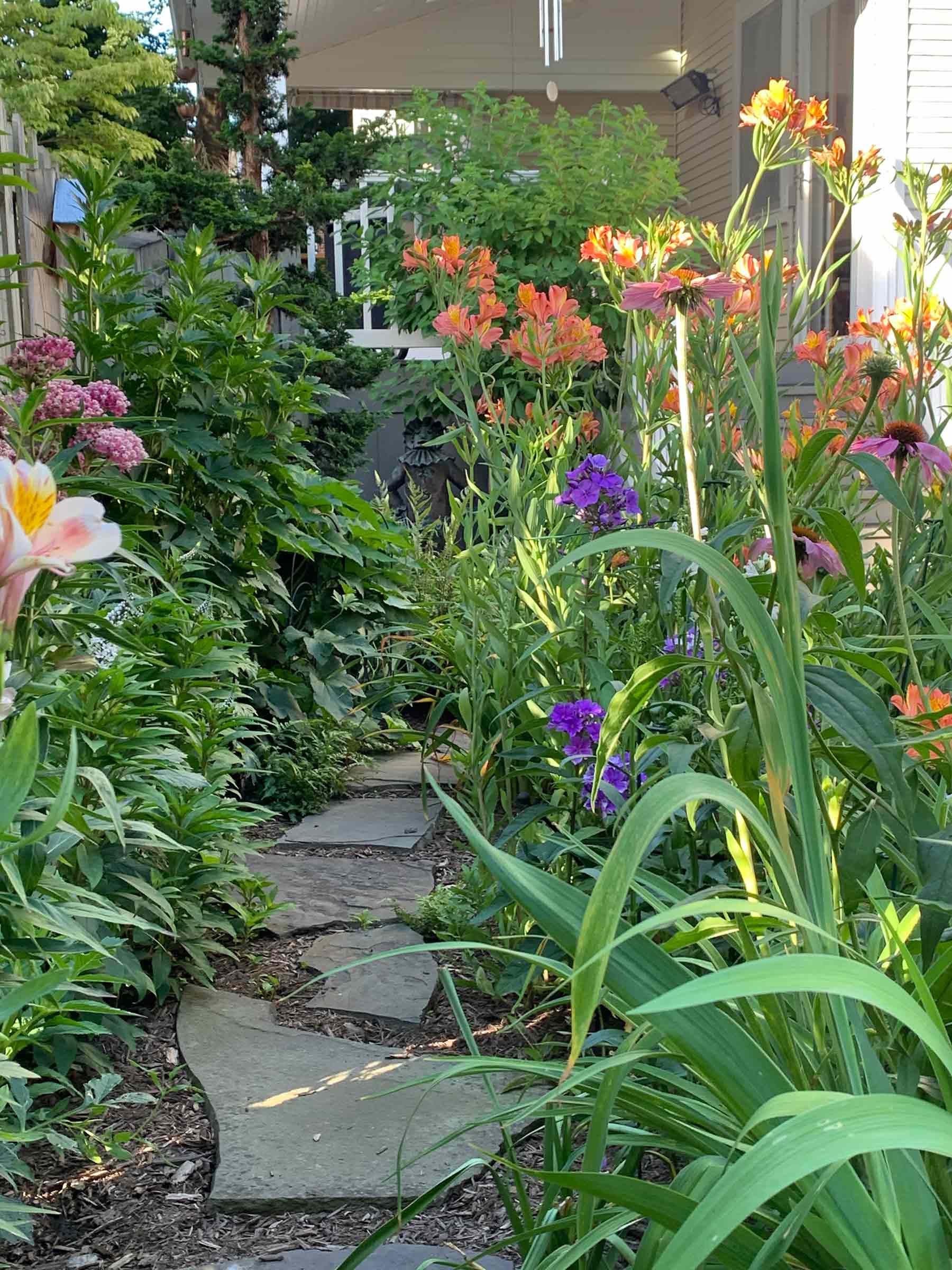
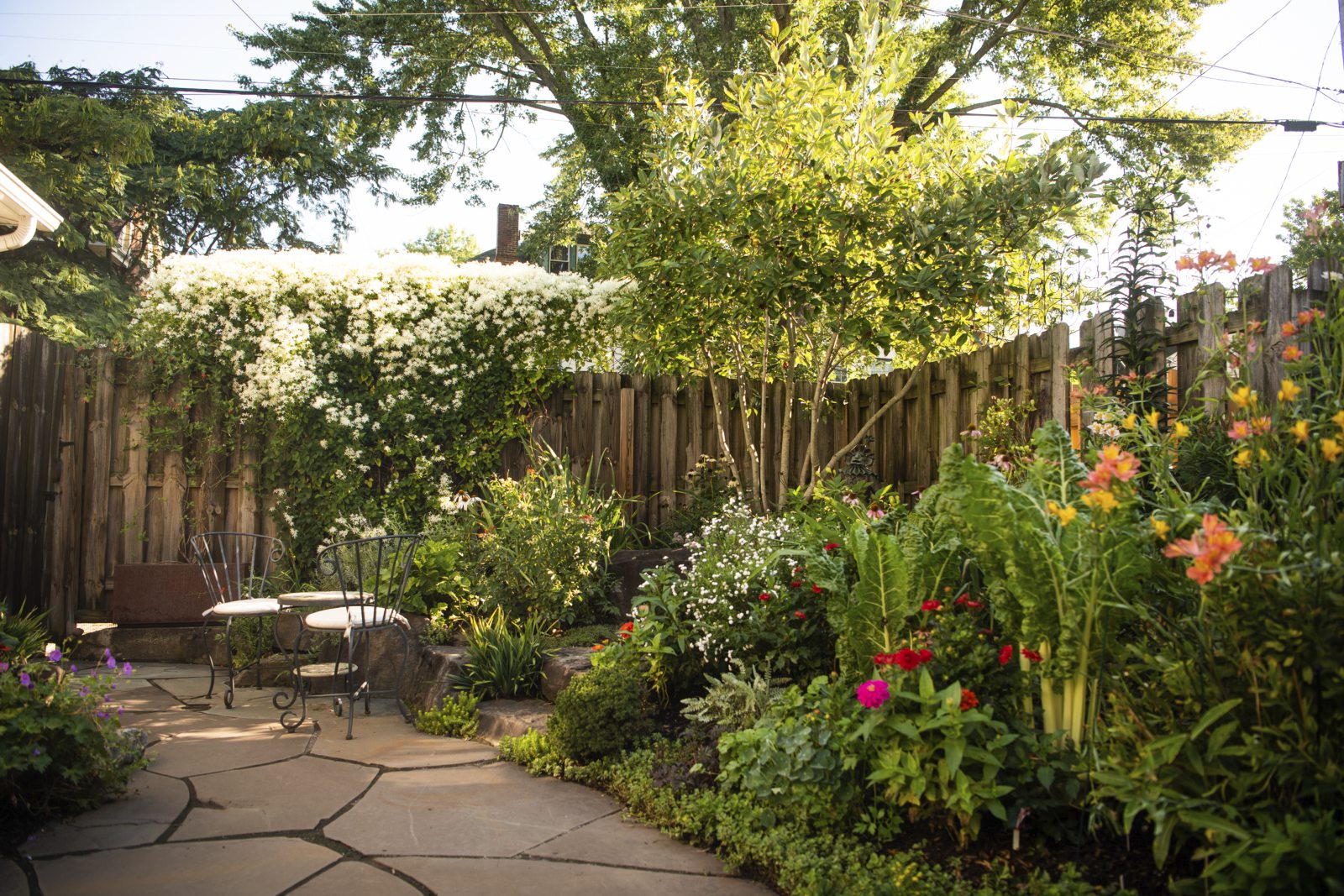
Select photos © Shane Dunlap

